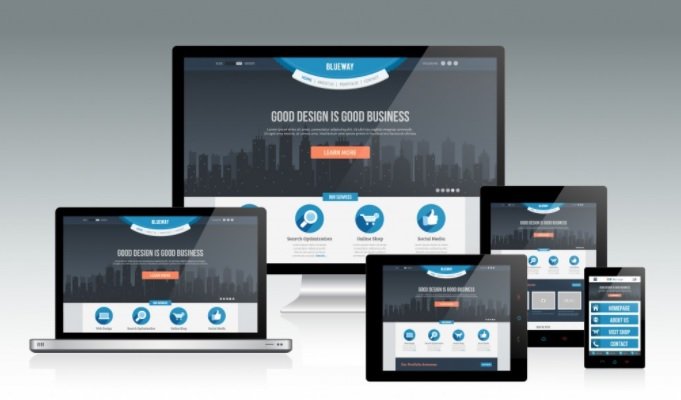Every digital service that we use is increasingly focusing on providing users with convenience. Whether it’s a laptop, handheld mobile device or any other gadget, companies charge a premium because of the convenience they offer. Within this digital ecosystem, the importance of cross-device usage is very relevant.
We are less reliant on desktop computers or laptops to gain access to the internet; as a result, smartphones have become much more sophisticated and powerful, being able to provide an enhanced user experience and the opportunity to work on the go. The need for people to constantly juggle between devices while they are working is utilized by Responsive Web design. We rely the internet for almost everything we do, and during our surfing, we use multiple devices.

Responsive web design aims to enhance the user experience across a range of different devices, be it a laptop or mobile phone. It focuses on making content accessible on screens of different sizes, enabling a seamless online experience. The consumer market for Responsive web design is increasing all the time, and if you are looking to implement it for a website, these key optimization factors are for you.
Key Features
Before we shed light on the optimization of Responsive Web design, let’s establish the basic tenets of this type of design. The idea behind responsive design is to enable a seamless experience across a multitude of devices and when a user shifts from a laptop to a mobile device, the screen size decreases considerably. Responsive web design is sensitive to this change and makes the necessary adjustments to the display of data.
For example, many responsive designs display web content in one column for phones, and two on laptops. Some other important features of responsive design include minimal scrolling and zooming. In essence, the main goal for responsive web design is to reduce user confusion while they are viewing your website.
Optimizing Responsive Web Design
Shift From Pixels To a Fluid Grid
Traditionally websites were structured on a pixel measurement, rather than a fluid grid. With the onset of cross-device web usage, this has changed. Pixels specified the size of your website, but with the use of a fluid grid, the freedom to scale according to screen size and form factor has increased. When you are implementing a responsive web design, it is essential to check whether your website was designed on the pixel measurement. If yes, then you should look to revamp your site code and model it on an adaptive grid.
Select Necessary Display Features for Smaller Screens
When a user shifts onto a device with a smaller screen, not every design element has to be visible to them and this is the most important thing when implementing a responsive web design. The main goal to achieve is seamless user experience and some less important display elements must be left out to ensure this. For instance, many websites leave out larger images, or expanded menus and convert them into a single drop-down button.
Make Elements Touch-Screen Friendly
When designing for smaller devices, the size of screen is not the only factor you need to consider. Smartphones come with touch screens, so it is important that you make sure that the visual elements are styled in such a fashion that it is large and vivid. This makes it easy for users to operate with touch since they don’t face any hassle when engaging with your website interface.
You can also initiate unique calls-to-action, that are only displayed on smaller screen sizes to factor in the effect of touchscreens and user accessibility.
Responsive Design for The Win
Responsive designs are here to stay and implementing one for your website is essential to fit into the current trend. A business needs to cater to all types of consumers and a comfortable user experience is the first step that builds a long-lasting consumer relationship. To get sustained web traffic and revenue-generating opportunities, you need to keep visitors happy with a responsive web design.